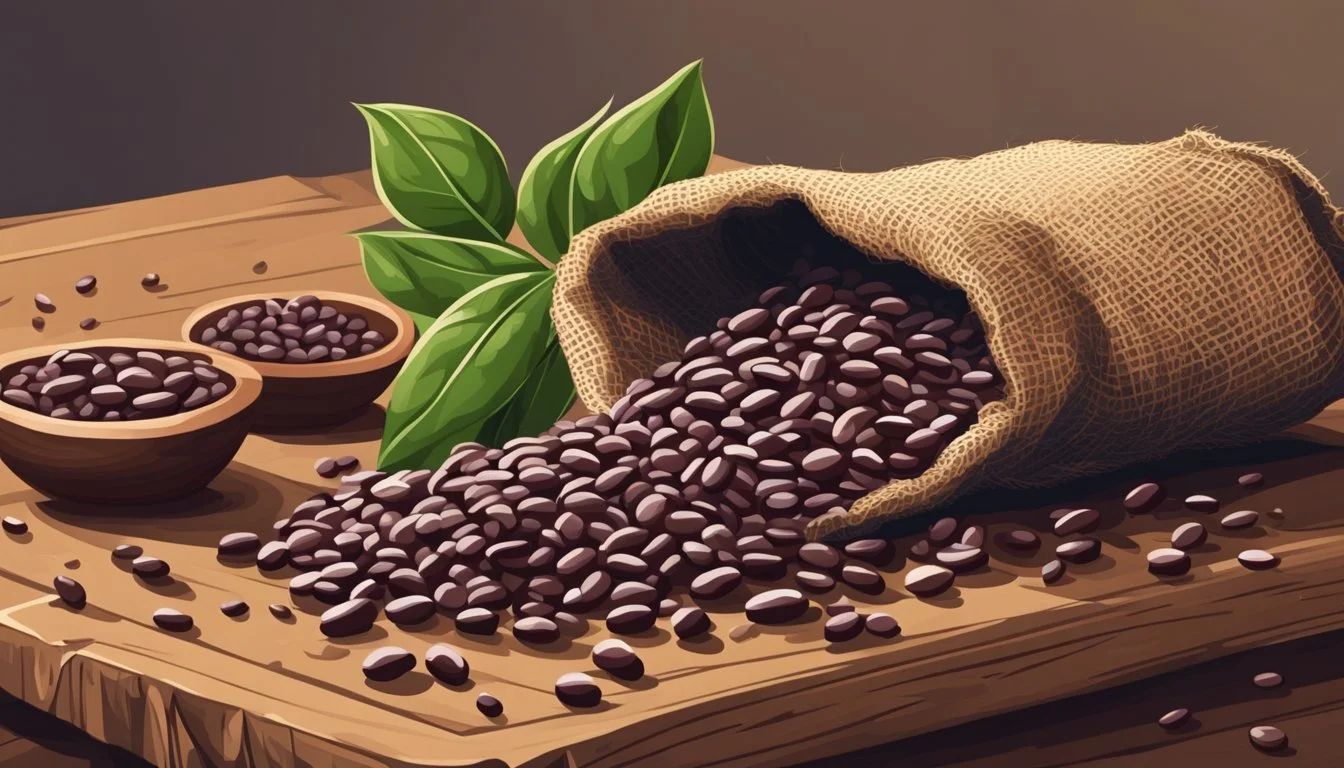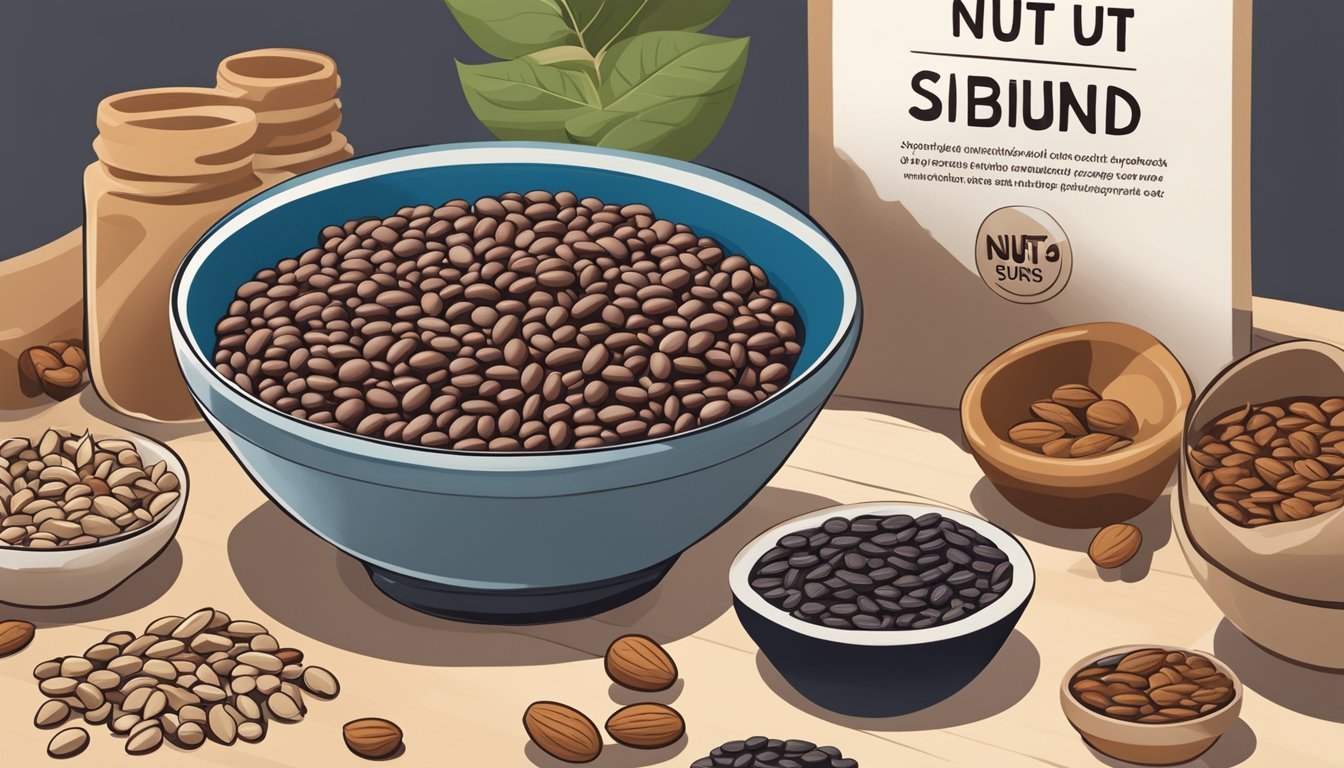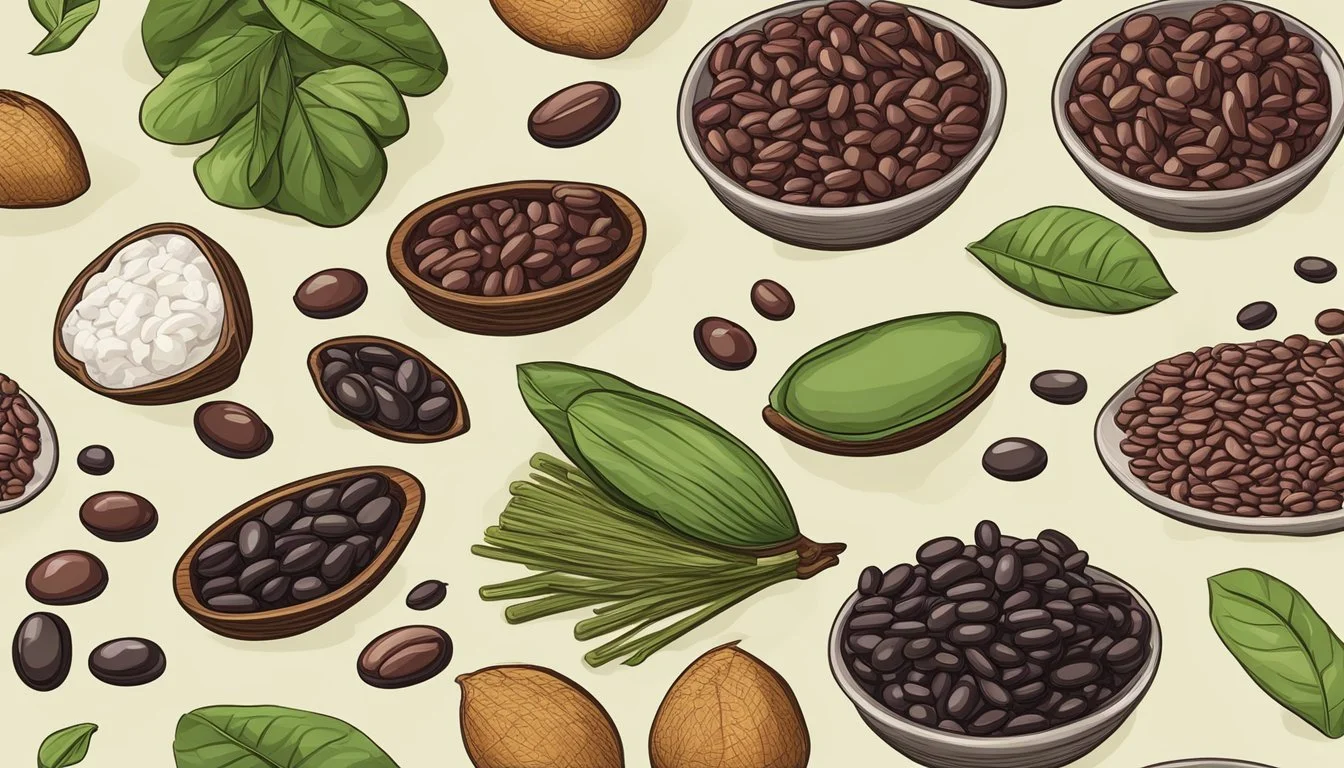Adzuki Beans Substitutes
Best Alternatives for Cooking and Baking
Adzuki beans are a versatile ingredient, cherished for their slightly sweet flavor and rich nutritional profile. Used widely in both savory dishes and desserts, they are a staple in many Asian cuisines. While their unique taste makes them irreplaceable in some recipes, there are numerous substitutes that can mimic their flavor and texture.
When you can't find adzuki beans, consider using options like mung beans, black beans, pinto beans, or red kidney beans. These alternatives share a similar profile, offering a combination of nuttiness and a creamy texture that works well in many recipes. Cannellini beans, with their slightly nutty flavor, also make an excellent replacement in dishes that call for adzuki beans.
For those looking to replicate the sweetness and texture of adzuki bean paste used in desserts, sweet potato paste or chestnuts can be a great choice. Cranberry beans can also add a colorful and nutty twist to your dishes, enhancing soups, salads, and stews with their soft texture.
Understanding Adzuki Beans
Adzuki beans, often used in Japanese and other Asian recipes, are known for their unique flavor and versatile culinary applications. This section explores their origin, nutritional benefits, and distinctive culinary characteristics.
Origin and Usage
Adzuki beans, also known as azuki or aduki beans, are small, red beans native to East Asia. Particularly popular in Japan, they are a staple in many traditional dishes. They are frequently used to make red bean paste (anko), which is a key ingredient in mochi, dorayaki, and other sweet recipes. Additionally, adzuki beans are used in savory dishes, soups, and stews, thanks to their pleasant, slightly nutty flavor.
Nutritional Profile
Adzuki beans are rich in protein, vitamins, and minerals, making them an excellent addition to a healthy diet. They contain significant amounts of fiber, which aids in digestion, and are also a good source of iron, magnesium, and potassium. Their nutritional profile supports not only general health but also caters to specific dietary needs, including those requiring plant-based protein sources. Their low calorie and high nutrient content make them a valuable food in both traditional and modern cuisine.
Nutrient Amount (per 100g) Calories 329 kcal Protein 20 g Fiber 12.7 g Iron 4.6 mg Potassium 1,254 mg
Culinary Characteristics
The culinary characteristics of adzuki beans are defined by their texture and flavor, which set them apart from other legumes. They have a firm texture that holds up well during cooking, making them suitable for a variety of dishes. The flavor profile of adzuki beans is mildly sweet with earthy and nutty notes, lending itself perfectly to both sweet and savory recipes.
In traditional Japanese cuisine, adzuki beans are used not only in sweet items like red bean paste but also in savory preparations such as rice dishes and stews. Their ability to absorb flavors from other ingredients while maintaining their unique taste makes them a versatile ingredient in any kitchen.
Common Adzuki Bean Substitutes
When adzuki beans are unavailable, several substitutes can replicate their flavor and texture in various dishes. Below are some suitable alternatives, each with unique qualities that make them fitting replacements.
Kidney Beans: A Versatile Alternative
Kidney beans, especially the red variety, are excellent substitutes for adzuki beans due to their similar size and texture. They can be used in both savory and sweet dishes, although their stronger flavor may be more suited to the former.
One advantage of kidney beans is their versatility. They hold up well in soups, stews, and salads. When using them as a substitute, it’s important to thoroughly cook kidney beans to avoid their naturally occurring toxins.
Mung Beans for Sweetness
Mung beans, particularly split yellow mung beans, are a good match for sweet recipes that typically use adzuki beans. Their mild flavor and soft texture are ideal for desserts and sweet dishes like bean paste fillings in pastries.
These beans also cook faster than some other legumes, making them a convenient option. Mung beans can add a subtle sweetness to dishes without overpowering other flavors, which is crucial in many traditional recipes.
Black Beans for Density
Black beans, also known as black turtle beans, are another suitable substitute. They have a dense texture and an earthy flavor that works well in heartier dishes.
Like adzuki beans, black beans are high in protein, vitamins, and minerals, making them nutritious. They can be used in everything from soups and stews to burgers and salads. Their robust nature allows them to stand up to long cooking times without becoming mushy.
Navy and Cannellini Beans for European Dishes
Navy beans and cannellini beans, also known as white kidney beans, are ideal for European recipes. These beans have a creamy texture that pairs well with Italian dishes like minestrone and bean salads.
Cannellini beans have a slightly nutty flavor, while navy beans are milder. Both types are great substitutes when you need a more delicate bean to complement subtle seasonings. They can easily absorb flavors from other ingredients, making them versatile in various cuisines.
Specialized Substitutes
Finding the right substitute for adzuki beans can be crucial in maintaining the flavor and texture of a dish. Here are some specialized options that can seamlessly replace adzuki beans in different culinary contexts.
Pinto Beans for Mexican Recipes
Pinto beans are an excellent substitute for adzuki beans, particularly in Mexican recipes. These beans have a creamy texture and mild flavor that pairs well with traditional Mexican spices.
They can be used seasoned in dishes like burritos, enchiladas, and refried beans, where they bring both protein and fiber to the table. Pinto beans are also versatile, making them a great swap for giving a hearty, satisfying element to any meal that calls for adzuki beans.
Cranberry and Borlotti Beans
Cranberry beans and Borlotti beans are another suitable replacement for adzuki beans. Both types have a firm texture and are packed with flavor, making them ideal for soups, stews, and salads.
Cranberry beans are known for their nutty taste, while Borlotti beans offer a slightly sweet flavor. They can be used in a 1:1 ratio in recipes that require adzuki beans, ensuring the dish remains rich in nutrients and taste. Their unique colors can also add a visual appeal to meals.
Lentils and Other Legumes
Lentils, such as green or brown lentils, can also serve as a practical substitute for adzuki beans. These legumes are highly nutritious and cook quickly, which is a bonus for time-sensitive recipes.
Lentils can be used in dishes like soups, stews, and casseroles, providing a similar protein content and texture. Other legumes like black-eyed peas, chickpeas, and fava beans can also replace adzuki beans. Each type brings its own unique flavor and nutritional benefits, making them versatile options in various culinary applications.
Nut Alternatives
Adzuki beans can be substituted with nutty-flavored alternatives such as chestnuts and black sesame. These substitutes work particularly well in various desserts, providing unique textures and tastes.
Chestnuts for Sweet Dishes
Chestnuts offer a sweet, nutty flavor, making them an excellent choice for desserts that usually call for adzuki beans. When cooked, they become tender and blend well into pastes. Chestnut paste is commonly used in sweets like pastries, cakes, and traditional Japanese confections.
To prepare chestnut paste, boil or roast the chestnuts, peel them, and then puree until smooth. This paste can be flavored with sugar or spices to match the desired sweetness and aroma. Chestnut paste has a creamy texture which makes it a suitable filling for sweets.
Using Black Sesame in Asian Desserts
Black sesame seeds are another flavorful substitute, particularly prevalent in Asian recipes. They lend a nutty, rich taste that enhances dessert profiles. Black sesame can be used whole or as a paste.
To make black sesame paste, toast the seeds lightly to release their oils and then grind them into a fine paste. This paste can be sweetened and used in dishes such as mochi, ice cream, and puddings. It adds a deep, earthy flavor and a striking dark color, making desserts visually appealing.
Selection and Preparation Tips
When selecting substitutes for adzuki beans, consider both the flavor and texture of the beans. Options like black beans and red beans offer a similar profile.
For savory dishes, you can use:
Black turtle beans – High in protein and have a rich, earthy flavor.
Red kidney beans – Similar in texture but more robust in taste.
For sweet recipes, consider:
Sweet potatoes – Pureed, they can replace red bean paste in desserts.
Pumpkin puree – Has a mild sweetness and a slightly nutty note.
It's crucial to prepare these substitutes correctly. Soak dried beans, such as black beans or fava beans, to reduce cooking time and enhance texture. For those using chestnuts, ensure they are cooked thoroughly to blend well with other ingredients.
Here is a simple substitution guide:
Original Ingredient Substitute Ratio Adzuki beans Black turtle beans 1:1 Adzuki bean paste Sweet potato paste 1:1
By following these tips, you can ensure the substitutes complement the desired dish, whether it's a savory stew or a sweet pastry.
Health Considerations
Adzuki beans, like other legumes, offer a range of health benefits. They are a rich source of protein, making them an excellent choice for those looking to increase their protein intake without consuming animal products.
These beans are packed with essential nutrients, including vitamins and minerals. They contain high levels of fiber, which can aid in digestion and help maintain a healthy gut.
Adzuki beans also have antioxidant properties. Antioxidants play a crucial role in protecting the body from oxidative stress and reducing the risk of chronic diseases.
For individuals concerned about digestive issues such as gas, adzuki beans may be a better option compared to some other legumes. They tend to be easier to digest, potentially causing less bloating and discomfort.
Incorporating adzuki beans into the diet can contribute to lowering cholesterol levels. This can support cardiovascular health and reduce the risk of heart disease.
Below is a snapshot of the nutritional profile of adzuki beans:
Nutrient Amount per 100g Protein 7.5 grams Fiber 7.3 grams Iron 2 milligrams Magnesium 62 milligrams Calories 128 kcal
Note: Values may vary based on preparation methods.
Using adzuki beans as a part of a balanced diet can help meet dietary needs for essential nutrients while supporting overall health and wellness.
Culinary Applications
Adzuki beans and their substitutes find a variety of uses in both savory dishes and desserts.
In savory dishes, adzuki beans are often incorporated into soups, stews, and salads. They add a nutty and slightly sweet flavor. Red beans and black beans can step in for adzuki beans in these contexts, bringing similar texture and flavor profiles.
Desserts also benefit from the unique qualities of adzuki beans. They are famously used in East Asian sweet dishes like red bean paste. Chestnuts and sweet potatoes can make excellent substitutes for dessert recipes, providing a similar sweet and earthy taste.
Red kidney beans and black turtle beans can be used for their high protein content, adding nutritional value to any meal. These beans have a robust flavor that works well in savory recipes.
Fava beans and mung beans also offer versatile options. Fava beans need some processing, like blanching and peeling, to achieve the right texture. Mung beans provide a comparable feel and can be used in both sweet and savory dishes.
Combining substitutes such as pumpkin or kabocha pumpkin with spices like cinnamon can elevate the flavor profile, especially in desserts. The nutty notes and smooth texture of these substitutes align well with adzuki beans' culinary applications.
Pinto beans and even black sesame seeds showcase the flexibility of replacing adzuki beans in various recipes, adapting well to both the hearty and sweet domains of cooking.
Incorporating these substitutes ensures that the distinct characteristics of adzuki beans are preserved across diverse culinary landscapes.







